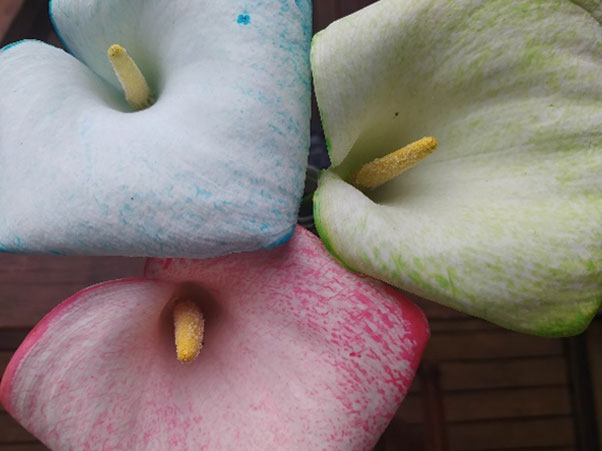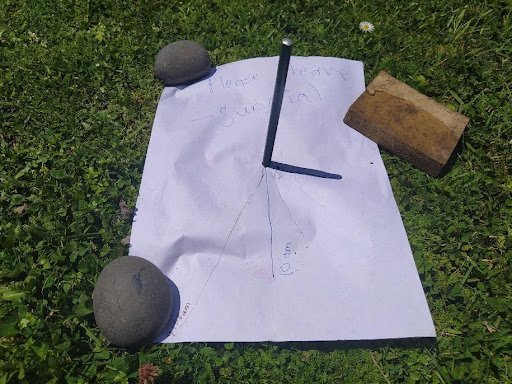Sep 24: Colouring Flowers
Fish and colouring flowers…

Below are some talking points and activities to pass the time, all relating to today’s story.
Talking points
Discuss the ideas presented in the story with your family—at home or over video conferencing. Find ways to involve as many people as possible, especially those who you know are isolated by the lock-down.
- These emotive words are used in the standfirst (which is underneath the heading): invasive, writhe, displacing, destroying. Which of these words are you familiar with? What is the message you get about koi carp from these words?
- The World Koi Carp Classic has removed 70 tonnes of fish from Waikato waterways. Can you figure out how much this is by working out how many kilograms are in a tonne? If a 40cm kahawai weighs about 1kg, and we presume a kahawai is similar in density to a koi carp, try to estimate how many fish you could fit into your kitchen. How many rooms the size of your kitchen would you need to fit 70 tonnes of fish?
- The story of how koi carp were naturalised in the North Island is interesting – someone released the fish from their garden pond into a stream near Te Awamutu. Do you think that person could have foreseen the consequences of what they did? How does a release of small fish turn into the large-scale problem we have today, where koi are the dominant fish in many waterways? Can you think of any other species that have “naturalised” here?
- The fish are described as a “suffocating presence” in conservation areas. What does the choice of the adjective “suffocating” tell us about their impact on other species?
- The “Carpuccino” invention means that koi can be trapped and turned into fertiliser. They become “nutrient vectors” that can help plants grow on the riverbanks once they’ve been processed. What do you think is meant by “nutrient vectors?” Find out what a vector is if you don’t already know, then try to explain it in your own words.
Activity: Colouring Flowers
Unlike native species which suffer from an oversupply of nutrients in waterways, koi carp can cope with pollutants like nitrogen. Explore the way living things are affected by water by colouring white flowers with food colouring.
You will need:
- Food colouring in one or more colours
- White flowers
- A vase or jar
- Water

Step One: Find some white flowers – lilies work well as they have very thick stalks. Cut the stems at a right angle and place them in the jar of water.

Step Two: Add food colouring to the water. Watch the lilies at regular intervals to see how long it takes for the coloured water to start showing through in the white of the petals. You might see changes after half an hour, depending on the flowers you’re using.

Step Three: After 12 hours, check the flowers again and look at where the petals are most heavily stained. Why might the colour vary in some parts of the petal? How does the colour travel from the water to the petals?
















